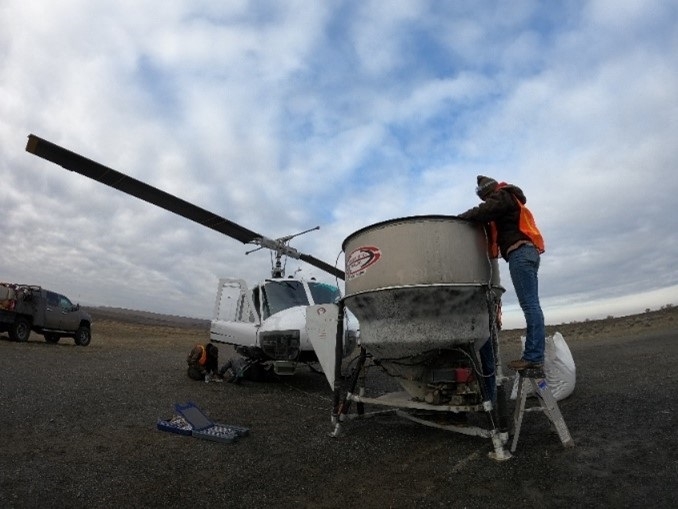Hanford Site to restore wildland after grass fire

A worker readies a hanging bucket for a helicopter used to drop native grass and shrub seed on thousands of acres of the Hanford Site that burned in 2020. Source: DOE
An aerial seeding project on the Hanford Site’s Gable Mountain will help restore lost habitat following a wildland fire in June of last year, according a March 3 announcement from the Department of Energy’s Richland Operations Office (RL). The wildfire burned more than 5,500 acres on the mountain at Hanford, in Washington state.
Outgoing DOE contractor Mission Support Alliance coordinated the effort to drop 75,000 pounds of native grass and shrub seed from a helicopter during the rainy winter season. The project will continue under the new contractor, Hanford Mission Integration Solutions. Biologists expect the seeds to germinate by spring.
“Remediating environmental damage from the Gable Mountain fire is a priority, and the use of harvested native seeds will offer the best chance at future restoration of this critical habitat,” said So Yon Bedlington, RL program manager.


